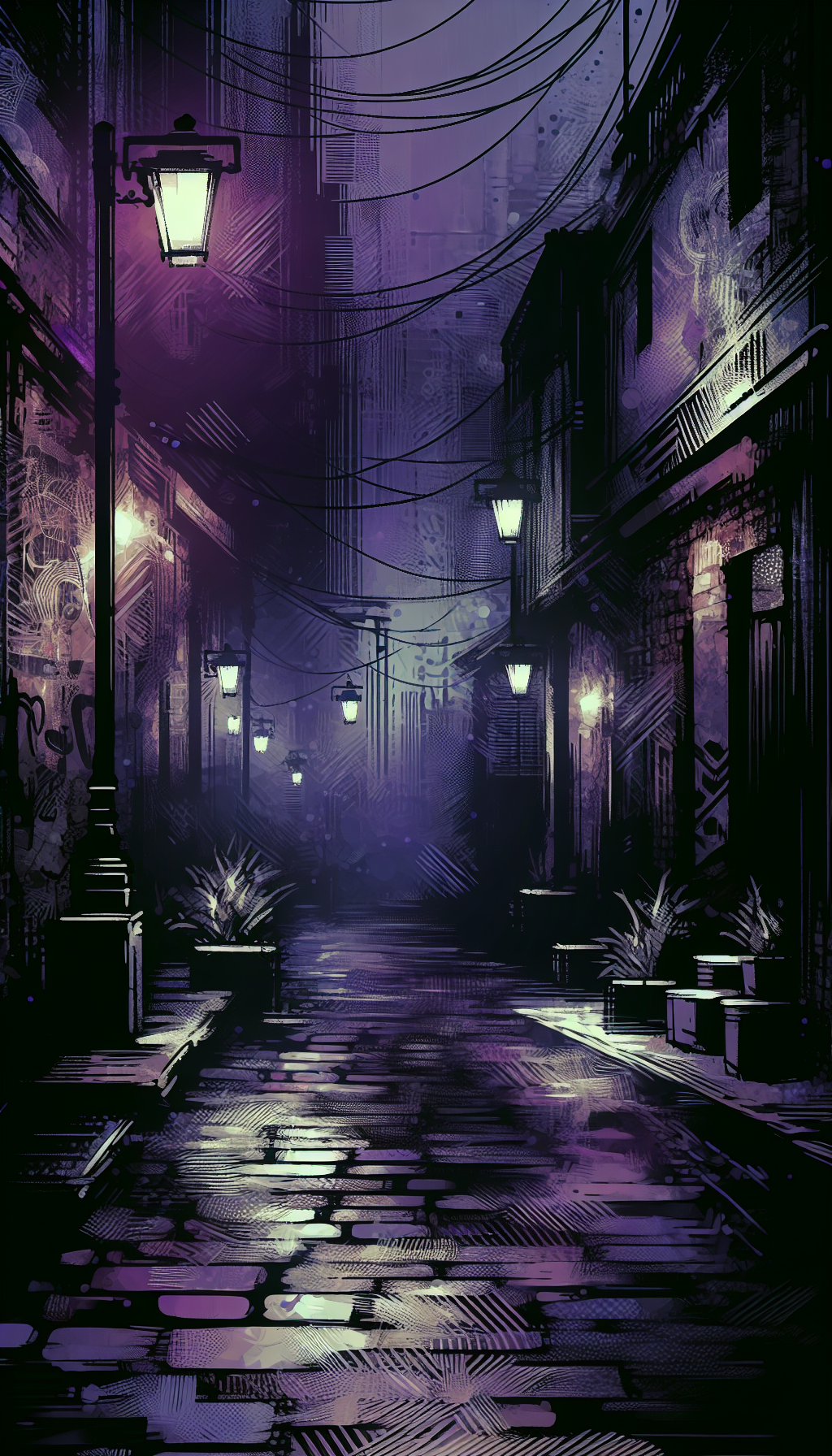A Circa Mid 20th Century Original Street Scene Painting
Street scenes from the mid-20th century sit at the crossroads of documentary charm and artistic experimentation. Whether painted in oil on canvas, gouache on paper, or acrylic on hardboard, these works capture urban rhythms—trams, neon, rain-slicked pavements, and wartime-to-postwar architectural shifts. For appraisers and enthusiasts, they offer a rich field for connoisseurship: datable materials, clues encoded in signage and fashion, and an active market with clear comparables. This guide distills how to identify, date, evaluate condition, and estimate value for a circa mid-20th century original street scene painting.
Defining the Genre and Period
A “street scene” centers on public thoroughfares—boulevards, alleys, marketplaces—with figures, vehicles, storefronts, and urban architecture as primary content. “Circa mid-20th century” generally refers to the period from the late 1930s through the early 1960s. In practice, you’ll encounter:
- Social Realist and Ashcan-influenced works in the 1930s–40s: grittier palettes, emphasis on labor, storefronts, and tenements.
- School of Paris and émigré modernism: lively palette knife work, rainy reflections, and café-lined boulevards.
- Postwar American Regionalism and urban modernism: simplified forms, bolder color planes, and graphic night scenes with neon.
- Mid-century European tourist-market paintings: repetitive Montmartre, Venice, or Old Town scenes, sometimes formulaic but still collectible if well executed.
Street scenes functioned as accessible subjects for both studio artists and plein air painters, making them abundant—yet the best examples show compositional intelligence: a strong diagonal street, controlled perspective, and purposeful focal points such as a lit shop window or an umbrella cluster.
Dating Clues: Materials, Techniques, and Visual Evidence
When a painting isn’t dated, forensic details can still narrow the window. Consider materials first, then stylistic and contextual clues.
Materials and supports
- Canvas: Pre-stretched cotton and linen were common. Hand-tacked canvases with cut tacks or small nails are typical through the 1940s; factory staples become widespread in the early to mid-1950s. Corner keys in wooden stretchers suggest 20th-century construction; look for oxidation and wear consistent with age.
- Hardboard (Masonite): Introduced earlier but widely adopted mid-century. Un-tempered hardboard shows slightly fuzzy brown edges; tempered boards often darker and slicker at the edge. Warping or corner crush is common.
- Plywood: Used intermittently, especially during wartime material constraints; cross-grain edge structure is visible.
- Paper: Gouache and watercolor street scenes are plentiful. Mid-century cartridge papers may show uniform machine-laid textures; acidic paper will have browned edges.
Grounds and paint
- Primers: Oil grounds and gesso are both seen; brush-laid gesso on hardboard is common.
- Oils: Dominant through the period; alkyd-modified oils appear by the 1960s and can produce distinct, slightly glossy, flexible films.
- Acrylics: Early solvent-borne acrylics (e.g., 1940s) are rarer; waterborne artist acrylics become more available mid-1950s onward. If clearly acrylic and stylistically “mid-century,” think late-1950s to early 1960s.
- Pigments: Titanium white becomes standard by mid-century; phthalocyanine blues/greens (introduced in the 1930s) are widespread in the 1950s–60s. Vivid, cool greens and intense “phthalo” blues suggest postwar palettes.
Framing hardware and labels
- Hardware: Sawtooth hangers are later and more amateur; early to mid-century frames often have screw eyes and wire. Stamped, mass-produced frame profiles with plastic gilding are later.
- Labels: Gallery, exhibition, and art supply labels on the verso (or frame backing) are gold. Handwritten titles and exhibition stamps can fix a date. Retail chain framing labels can also indicate a postwar retail origin.
Signatures and inscriptions
- Signatures may be in brush, pencil (on the verso), or incised in wet paint. Date styles like ’48 or ’59 are common. Compare signature letterforms across known works if the artist can be tentatively identified.
- Street name inscriptions—“Rue de…” or “Via…”—can narrow location; cross-reference with the depicted urban details.
Contextual dating clues
- Vehicles: Rounded fenders are common pre-1950; tailfins appear late 1950s. Bus and tram liveries can be locale-specific.
- Clothing: Men’s felt hats and broader lapels in the 1940s; by late-1950s, slimmer silhouettes. Women’s hemline and coat shapes shift meaningfully across the decades.
- Lighting: Neon signage proliferates mid-century; gas lamps in European old towns linger but electric streetlights dominate.
- Storefront typography: Lettering styles, language, and brand signage can date to pre- or postwar periods.
- Urban infrastructure: Postwar reconstruction (scaffolding, modernist facades) in European scenes can be a time cue.
Use these clues cumulatively: a hardboard panel with waterborne acrylics, neon signage, and late-1950s car fins strongly supports a late-1950s to early-1960s date.
Quality Indicators vs. Red Flags
Quality indicators
- Intentional composition: A clear vanishing point, balanced masses, and convincing perspective (converging facades, receding tramlines).
- Light management: Reflective pavements after rain; warm window light offset against cool dusk tones; controlled edges.
- Figure handling: Even in loosely painted works, figures should “sit” in perspective, with shadows consistent in direction and temperature.
- Confident mark-making: Palette knife passages that build form rather than obscure it; brushwork that varies with subject (soft edges for fog/smoke, crisp for signage).
- Surface unity: Varnish applied evenly (when present); consistent crackle that matches ground and paint behavior.
Red flags
- Formulaic repetition: Identical compositions with minimal variation, suggesting tourist-atelier production. Not necessarily fake, but lower tier.
- Anachronisms: Materials or details that don’t align (e.g., modern acrylic gesso paired with a claimed 1930s date).
- Over-restoration: Heavy retouching visible under raking light or UV; glossy, plastic-like varnish obscuring texture.
- “Aged” frames with fresh rabbet wear: Intentional distressing to suggest age.
- Suspicious signatures: Signatures added over dirt or varnish layers; inconsistent with brush handling elsewhere.
Distinguishing original paintings from prints
- Under low magnification, look for paint texture bridging canvas weave and random impasto. Offset lithographs show rosette patterns; photomechanical prints have uniform dot structures. Some mid-century prints were hand-coloured; inspect for underlying print dots in light areas.
Condition and Conservation: What Matters for Value
Common condition issues
- Surface grime and nicotine: Frequent in domestic settings; cleans safely with a conservator’s care.
- Craquelure: Age-appropriate, stable crack networks can be acceptable; active cupping, lifting, or flaking is more serious.
- Stretcher bar imprint: Dark lines where canvas crosses stretcher edges; cosmetic but expected.
- Panel warping: Hardboard and plywood can bow; mild warping may be manageable with proper framing.
- Abrasion: Along the edges where the frame touched the paint layer. Look for underpaint exposure.
- Varnish discoloration: Yellowed natural resins can obscure cool tones; reversible cleaning may restore chroma.
- Water staining on paper: Tidelines and foxing reduce value; professional treatment improves presentation but not always fully reversible.
Impact on value
- Minor, stable age wear has limited impact if the image is strong.
- Structural issues (tears, severe flaking, heavy overpaint) significantly depress value.
- Sensitive, well-documented conservation can preserve or improve value. Overcleaning that erases glazes or original surface can permanently harm value.
Framing and presentation
- Period-appropriate frames help but are not mandatory. Simple mid-century frames (thin, painted wood; narrow gilt liners; shadowbox for panels) often complement.
- Use archival backings, spacers for works on paper, and non-invasive mounting. Replace brittle acidic mats.
Artists, Regional Schools, and Market Context
Attribution ranges from named artists with established markets to anonymous or regional painters. Recognizable schools include:
- School of Paris and émigrés: Post-impressionist to expressionist handling, Paris boulevards and cafés, strong tourist market appeal yet with fine art roots.
- British postwar street scenes: Market towns, rainy London streets, often with restrained palettes.
- American cityscapes: New York, Chicago, San Francisco—bridging realism and modern graphic design.
- Continental and Latin American markets: Historic centers, vendor markets, and festivals; color-forward palettes.
Market considerations
- Subject desirability: Rainy-night luminism, snow scenes with lamplight, and animated markets regularly outperform dry daylight streets.
- City recognition: Paris, Venice, New York, and London command broader demand than anonymous towns, but authenticity and quality beat name alone.
- Size and medium: Middle sizes (e.g., 16 x 20 in to 24 x 36 in) are liquid for interiors; large works need strong authorship to perform. Oils tend to outpace gouache/watercolor unless by a listed artist.
- Provenance and exhibition history: Documented showings and reputable gallery labels support pricing confidence.
Indicative price bands (broad guidance, not guarantees)
- Anonymous yet strong-quality mid-century oil street scenes: roughly modest three figures to low four figures, depending on size, condition, and appeal.
- Named, collected artists with auction records: from mid four figures upward; trophy examples higher.
- Tourist-atelier works: typically lower three figures unless exceptional.
Always anchor estimates to current comparables by artist, subject, size, and medium; condition-adjust the comparable prices.
Documenting and Preparing for Appraisal
Good records and clear photography streamline professional appraisal and eventual sale.
- Photography: Shoot front-on, evenly lit, color-balanced images. Add raking light shots to reveal texture and condition. Photograph the verso, corners, labels, and signature close-ups.
- Measurements: Record height x width without frame (image or canvas size) and framed size. Use consistent units.
- Materials and technique notes: Canvas vs panel, oil vs acrylic vs gouache, varnish presence, visible ground color.
- Provenance: Bills of sale, gallery receipts, exhibition catalogs, and prior appraisals. Even partial chains help.
- Condition report: Stable vs active issues, prior restorations, frame condition. Note any UV/fluorescence observations if examined.
- Research: Identify subject location (street names, landmarks), date range, and potential artist via monogram or stylistic comparison.
Organize this into a single document or folder, labeled with a working title and date.
Practical Checklist: Mid-20th Century Street Scene Appraisal
- Identify support: canvas, hardboard, plywood, or paper; note tacks vs staples and stretcher type.
- Determine medium: oil, acrylic, or water-based; look for varnish and ground color.
- Inspect signature and date: front and verso; compare style to known examples if the artist is suspected.
- Gather contextual clues: vehicles, clothing, signage, architecture to narrow the date and place.
- Examine the verso: labels, inscriptions, framing marks, and oxidation consistent with age.
- Assess condition: dirt, craquelure, lifting, overpaint, warping; differentiate stable from active issues.
- Evaluate composition and execution quality: perspective, light handling, figure integration, surface unity.
- Research comparables: same artist or school, similar subject, size, and medium; adjust for condition.
- Document fully: photography, measurements, provenance, and a concise condition report.
- Consider conservation: seek a conservator’s opinion before cleaning or revarnishing.
Short FAQ
Q: How can I tell if my street scene is oil or acrylic? A: Under magnification, oils often show softer transitions and can yellow slightly in the varnish; early acrylics appear more matte and may sit more plastically on the surface. A cotton swab with a minimal, safe solvent test should only be done by a conservator to avoid damage.
Q: Do frames affect value? A: A period-appropriate frame improves presentation and saleability, but value is driven primarily by artist, subject, quality, and condition. Replace failing frames; keep old labels and backing papers as provenance.
Q: Is a yellow, cloudy varnish a deal-breaker? A: Not usually. Discolored natural resins are common and often reversible. Proper varnish removal and revarnishing can significantly improve appearance and marketability when done by a professional.
Q: What if my painting looks “too perfect” or repeated? A: Repetitive compositions may come from tourist ateliers. They can be genuine paintings but usually sit at lower price points unless execution is exceptional. Look for varied brushwork, nuanced light, and non-identical detail.
Q: How important is a signature? A: Helpful but not essential. Many strong mid-century street scenes are unsigned. Quality, condition, and subject can still support solid valuations. If signatures are present, verify they’re executed in the paint layer and consistent with the work.
A well-observed mid-century street scene combines time-capsule urban detail with painterly insight. By reading materials, decoding contextual clues, and weighing execution against the market, you can confidently position such a painting—whether for appraisal, conservation, or sale.



